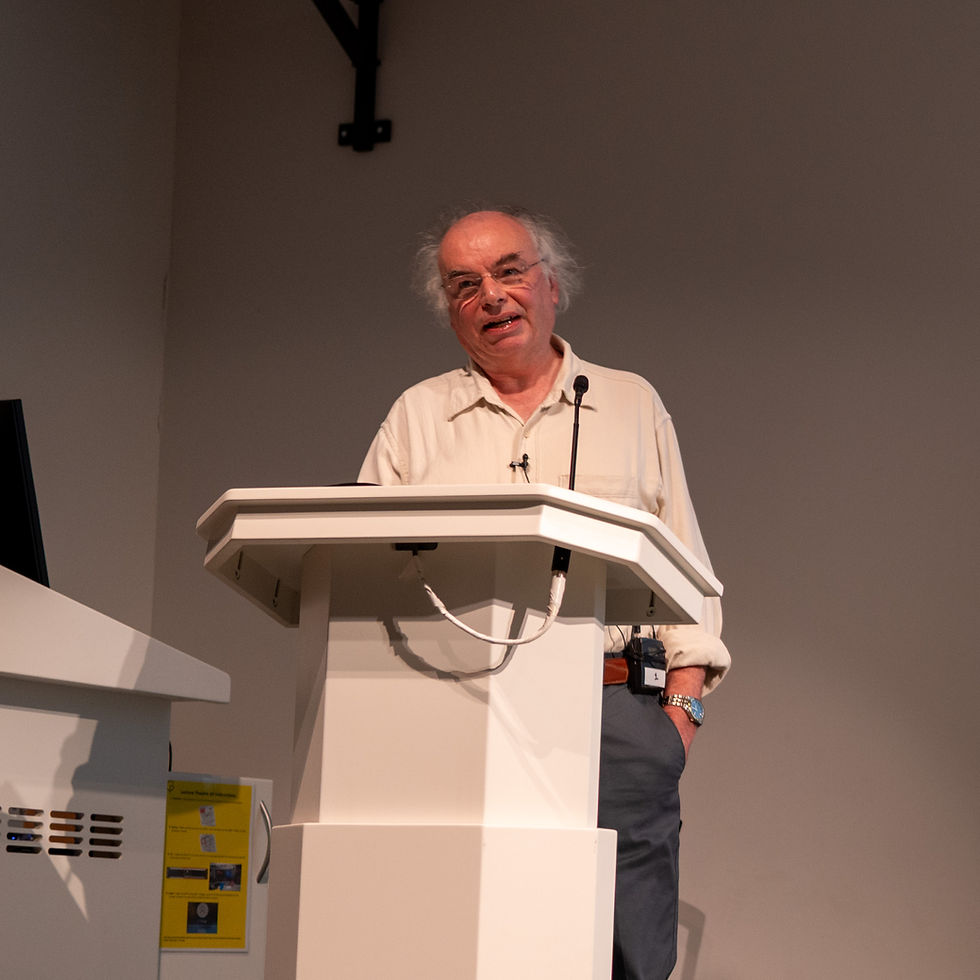What are these mysterious Fast Radio Bursts? by Professor Ben Stappers
- Mike Meynell

- May 14, 2023
- 2 min read
Updated: May 17, 2023
In the vast expanse of the cosmos, there are phenomena that puzzle even the most astute minds. Among these, Fast Radio Bursts (FRBs) have been a tantalizing enigma, catching the attention of scientists worldwide. These brief, intense flashes of radio waves appear randomly and fleetingly, yet for their short duration, outshine almost everything else in the sky.
A lecture addressing this captivating subject was recently presented to the Flamsteed Astronomy Society by Ben Stappers, Professor of Astrophysics in the Jodrell Bank Centre for Astrophysics, where he leads the Pulsars, Exoplanets and Transients research group. The lecture, titled "What are these mysterious Fast Radio Bursts?", explored the intriguing world of FRBs with both depth and clarity.

Professor Stappers began his talk by delving into the discovery of FRBs, an unexpected find during a 2007 survey of pulsar candidates. This ushered in a new era of radio astronomy, with these brief bursts providing a tantalizing glimpse into the universe's most extreme environments. Despite their brief appearance, FRBs release an immense amount of energy, typically as much as the Sun emits over several days, compacted into mere milliseconds.
Ben touched upon the challenges that astronomers face when studying FRBs. Their random appearance and typically one-off nature make these events incredibly difficult to predict or trace back to their origins. However, a handful of repeating FRBs have been discovered, offering tantalizing clues about their potential sources. These repeaters have been traced back to a diverse range of extreme astronomical environments, from star-forming regions in dwarf galaxies to the vicinity of supermassive black holes.

Discussing the latest findings, Ben highlighted how FRBs have become valuable cosmological tools. He explained how some scientists are using FRBs to probe the intergalactic medium, the vast space between galaxies. The way an FRB's radio waves spread out and delay can give us clues about the amount and state of matter they've travelled through, providing a new way to map the universe's structure.
Furthermore, Ben presented current theories about what might cause these mysterious bursts. Possibilities range from cataclysmic events like neutron star mergers to exotic phenomena like the evaporation of black holes. However, the diversity of observed FRBs and their associated environments suggest that there might not be a one-size-fits-all answer to what causes these bursts.
As the lecture drew to a close, Ben emphasized the active, ongoing research in this field. His own project, MeerTRAP, has been regularly finding FRBs, and he hopes to get funding to extend the project into the future. With new facilities like the Square Kilometre Array coming online, we're entering an exciting era of FRB discovery. The next few years promise to bring a flurry of new detections, which will hopefully shed more light on these enigmatic events.

In conclusion, Professor Stappers' lecture was an engaging journey through the fascinating world of FRBs. His clear explanations and passion for the subject brought to life the mysteries and potential of these cosmic flashes. As our understanding of FRBs continues to evolve, we look forward to future lectures that will no doubt illuminate these and other mysteries of our vast and intriguing cosmos.



























Comments